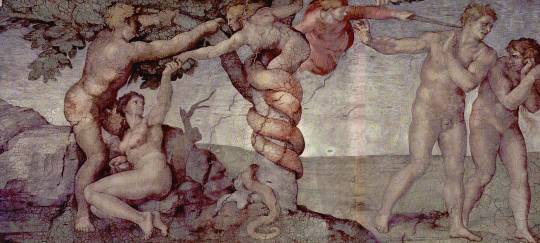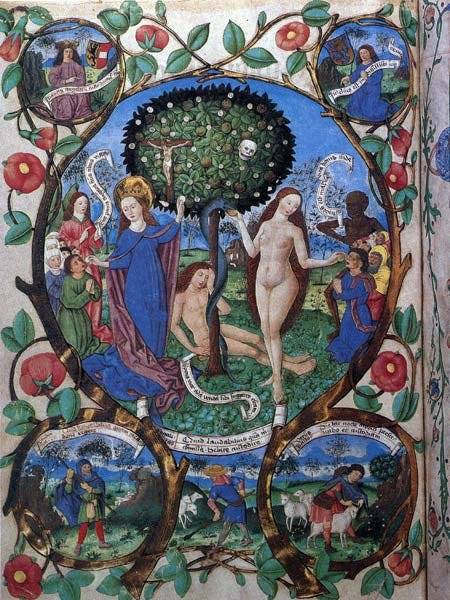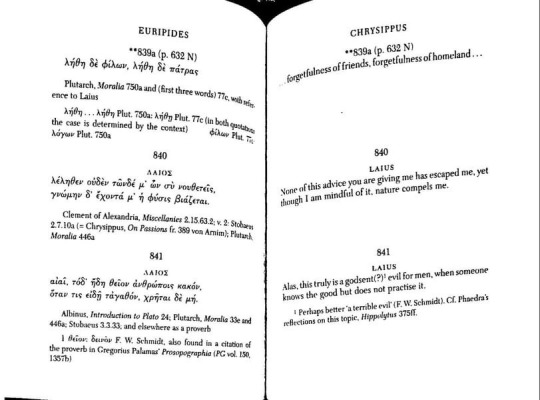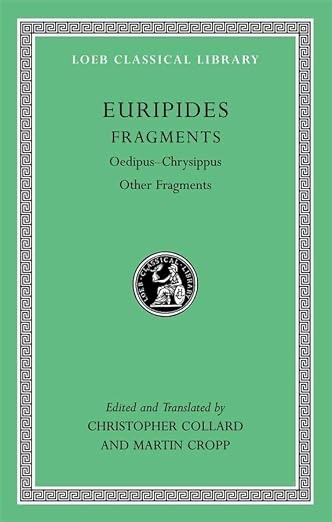#oedipal complex
Text
Yeah sorry about your boyfriend… turns out he’s actually your son you thought you had killed 2 decades ago. Oh yeah he also killed your late husband… yeah the oracle was right
#oedipus#oedipal complex#oedipus Rex#ulysses dies at dawn#your boyfriend meme#boyfriend meme#the mechs#the mechanisms#Allison has jokes#agtigone#Sophocles#greek tragedy
1K notes
·
View notes
Text
I can't stop thinking how Steve would have become Gator if his shitty dad had been around more.

Joe Keery, Oedipal extraordinaire.
#joe keery#steve harrington#stranger things#gator tillman#fargo#shitty dads#oedipal complex#my oc#im not crying youre crying
73 notes
·
View notes
Text
oedipus complex? no actually i think its pretty simple
60 notes
·
View notes
Text
This guy who was madly in love with me told me his mum was autistic and I blocked him because Freud was right.

#sigmund freud#freud was right#men DO wanna bang their mums#girlblogger#girlie things#im just a girl#lana del rey#this is what makes us girls#female experience#female rage#female hysteria#oedipal complex#femcel
20 notes
·
View notes
Text
The Electra Complex was theorized as a secondary pallet-swap to the Oedipus Complex, and Electra just wanted to avenge her (*ahem* rightfully murdered) father; she never wanted to marry him. Therefore, it should be renamed after a girl who really wants to kill her mother and marry her father. Here I propose the Chibiusa Complex. In this essay I will—
22 notes
·
View notes
Photo




#King of the Hill#season 5#I Don't Want to Wait...#Dale Gribble#Joseph Gribble#oedipus#oedipal complex
274 notes
·
View notes
Text
Recovering the maternal in art
Thoughts on Hamlet #1
A crazed rant on Hamlet, art in modernity, Susan Sontag, and female power in Christian theology

The feminine urge to be daddy's mommy. — — Natalie Wynn, Contrapoints
This is the first of my series of meditations based on Shakespeare’s Hamlet, which I have been studying as part of English literature A-level. It is the basis on which I expand into wider general reflections on culture and philosophy, linking to other things I’ve read or watched recently.
This piece begins as art criticism about excessive author presence in modern art, with allusion to Hamlet as an embodiment of such modern artist. But then it kind of diverges into a theological tangent and ultimately an argument about gender and female power in Christian myths.
It doesn’t really neatly belong to any specific literary category. It is essay-like, but is full of poetic logic. Perhaps just read it as a kind of unhinged diary entry or notes app notes that should have stayed in the drafts.
— — Z
1
Modern authors, perhaps due to their peculiar awareness of themselves as authors, have felt this exceeding sense of self-inflicted obligation, that they have to force their authorships onto the audience, to make them aware that what they’re seeing, is in fact, created by them. And not just by the world.

‘What a piece of work / Is a man!’ Hamlet, II, ii, 301–302
What I mean by this could be seen most obviously in the attempt that modern authors try to push “message” into their works, or simply the conscious attempt to have any message at all. Consciousness is really the crime here. There is a kind of forcedness in modern art, a lack of the grace, the relaxed effortlessness that is so prevalent in classical, canonical art. Modern art is always agitating, in a permanent state of anxiety and uncertainty in whether it has “correctly” communicated its message to its audience.
Notes: Hamlet is seen by many as Shakespeare’s most philosophical play, his most message-heavy work, with deep contemplations on the nature of existence.
The long soliloquies of the eponymous prince has long been described as rigorously academic in style, perhaps most famously, in the ‘to be or not to be’ soliloquy. It is the most decontextualised soliloquy uttered by the prince, in which he solely speaks on the conceptual matters of life and death.
Yet this intellectual aspect of the play might perhaps what Shakespeare precisely is trying to satirise here. A tormenting, self-cannibalising, painful intellectual interiority, emerging in the early modern West, with its deep Christian moralism and inhuman rationalism, is here presented as precisely what drives the main character, and those around him, into misfortunes.
‘O, what a rogue and peasant slave am I!’
Hamlet, II. ii. 538
The dramatic forcedness of Hamlet's messaging is perhaps most evident in the almost ravage-like scene in Gertrude's chamber (III, vi), in which he almost embodies the incestuous and murderous Nero.
'Let not ever
The soul of Nero enter this firm bosom.
Let me be cruel, not unnatural.'
III. ii. 366-368
Susan Sontag said that art should be flirtation, not rape. Well, many modern art feels like rape to me. They feel like rape in the way that they try to force one singular thing onto its recipient. It refuses a defused, tender sensuality that slowly transmits and triggers desires through a landscape of polyamorous tenderness. Instead, it is strictly patriarchal, scriptural, the word of the Father, of God, Author The Creator. There is a violence to it. But more so there is a naivety to it.
The violence is in the naivety. In its brutal attempt to not appear naive, but rather adultly, scholarly, fatherly, like the son who resolves the Oedipus complex by identifying with the father to escape the fate of castration. The dwarf dressed in the giant’s robes.
‘But two months dead — nay, not so much, not two-
So excellent a king, that was to this
Hyperion to a satyr, so loving to my mother
That he might not beteem the winds of heaven
Visit her face too roughly. Heaven and earth!’
‘My father’s brother, but no more like my father/ Than I to Hercules’
Hamlet comparing his father to his uncle, the current King Cladius, and himself, I. ii. 138–142; 153–154
This is the modern author. The anxious son, boy, fearing castration, if not already castrated, living in the shadow of the father, haunted by him, resenting his mother, the wanton, the whore, the true artistry of the world.


Hamlet (1949). Laurence Olivier
True art is always promiscuous. She is the Saint of All Sins. The Virgin in the Brothel. The Whore in the Church. The Holy Witch. The High Priestess of Filth. She is a woman. She is mother. The Oracle (whose words are obscure because they’re divine, not to Him the God, but the real, hedonistic god of music and joy, through whom she is enlightened in darkness). The Sea. Shall I moor tonight in thee.

Twilight, Contrapoints, Natalie Wynn
He, the God, and Her, Nature, whose fundamental battle is once again reenacted in this.
Genesis 1:2, the Spirit of God moved upon the face of waters. God moved on top of the sea, God on nature, man on woman, reason on art, this is the fundamental violation, the real original sin, the forbidden fruit of knowledge, brought forth by Himself through his very presence. The fault of the Fall is not in us. It is in Him. For to be holy is to be aware of the profane, as the opposite is equally true. Therefore to be profane, to be sinful, is precisely to be aware of the existence of the hallow. To learn about it. To aspire to it. Without sin, there would be no God. Like there would be no man without woman.
‘Whatever is the subject of a prohibition is basically sacred’.
‘The taboo does not banish the transgression but, on the contrary, depends upon it, just as the transgression depends on the existence of the taboo: “The transgression does not deny the taboo but transcends it and completes it”.’
Georges Bataille, Eroticism: Death and Sensuality
‘That discourse one might call the poetry of transgression is also knowledge. He who transgresses not only breaks a rule. He goes somewhere that the others are not; and he knows something the others don’t know.’
Georges Bataille, Story of the Eye
Notes: St. Augustine of Hippo wrote that original sin is transmitted by concupiscence and enfeebles freedom of the will without destroying it. But isn’t will also what precisely drove one (Eve) to the origional sin? Perhaps the will is much like Kant’s conception of freedom, a thing that creates its own limits.
Without an elusive ideal to aspire to, we will never be aware of our skin-felt wretchedness. The fruit is not only planted by God, it is God, it is God who eats the fruit, it is God who is the fruit being eaten, and it is God who is watching all of this.

I find it interesting. The closeness between the angel and Satan. Almost mirror images. In Michelangelo’s painting of the sin of Adam and Eve from the Sistine Chapel ceiling.
The decision to have the woman be the one to eat the fruit therefore, is interesting, on multiple levels. She is the original sinner, but also the one closest to God. For the fruit is God, but the fruit is also sin, and it is through the death of the man that she (gives birth to) achieves salvation. She is sin, but she is sin in grace, the glorified sin, the sin made divine, the virgin who gives birth, saved from stoning (here she also mirrors the other Mary, the other permitted sinner, Mary Magdalen), who gives birth to the man who is going to die, through which she successfully redeems herself. She is the mother, and she is the sinner, the original in both, and in both she is holy.
Eve is Mary and Mary is Eve.

The tree of death and of life in the Salzburg Missal: Eve gives the representatives of the old covenant the fruit that brings sin and death from the tree of paradise. Mary, on the other hand, gives the faith hosts, the bread of life. — — The New Eve (Latin: Nova Eva) is a devotional title for Mary, the mother of Jesus. Since the second century, numerous Eastern and Western Church fathers have expressed this doctrinal idea as an analogy to the biblical concept of the New Adam.
The man is essentially an accessory to her, a passage through which she penetrates through to achieve her eventual goal. He is only a thing that she decorates herself with. The baby in her bosom. The man on her laps (Pietà). The feminine urge to be daddy’s mommy. The gravedigger, whose death goes unmentioned, outlived everyone. Her blue robe is serene, like the halcyon sea.

Sandro Botticelli’s Madonna and Child, painted in 1480, shows a reflective Mary in deep blue.
Z
17.03.2024
(with notes later added 24.03.24)
Source:
Susan Sontag, Against Interpretation, On Style, The artist as examplary sufferer
Natalie Wynn, Contrapoints, Twilight
Georges Bataille, Eroticism: Death and Sensuality, Story of the Eye
Janet Adelman, Man and Wife Is One Flesh: Hamlet and the Confrontation with the Maternal Body
I have also posted this on Medium.
#shakespeare#hamlet#oedipus complex#literature#feminism#catholic core#philosophy#contrapoints#natalie wynn#twilight#georges bataille#eroticism#susan sontag#art criticism#art#literary analysis#literary criticism#diary#rambles#the virgin mary#symbolism#renaissance#ideas#theology#women in art#thoughts#oedipal complex#freudian#mommy issues
14 notes
·
View notes
Text
rip sigmund freud you would’ve loved the mommy kink tag on ao3
#ap psychology#shitpost#he’s literally insane btw#sigmund freud#freudian#shitposting#oedipal complex
17 notes
·
View notes
Text
Euripides Chrysippus literally just being ancient Lolita is very interesting








#Chrysippus#greek mythology#oedipus#oedipal complex#greek tragedy#greek translation#fragments#euripedes#Laius#atreus#Pelops#ganymede
14 notes
·
View notes
Text
it's the wolf tits. the she-wolf mommy milkers. that is what separates the barbarians from the romans. that is what separates civilization from the uncivilized. the west was enlightened by the oedipus mounds of luna. this is what the liberals want to take away from you
7 notes
·
View notes
Text
It really is just insult to injury that the Oedipus Complex (the theory that boys want to kill their fathers and marry their mothers) is named after Oedipus, considering his entire myth is about him doing his level best to avoid doing either of those things.
84 notes
·
View notes
Note
hiiiii i know this may come across as a bizzarre request but ... do you have any rec ( book, essay, movies other than tliw ) that follows the Oedipical interpretation of Eleanor & Richard I relationship on the wave of tliw ? i'm curious to know if it's a tliw-only interpretation or it can be found in other texts too!
not a bizarre request at all for this blog XD
This is the part where I have to shill The Devil's Crown again, which probably is the series that really leans on that sort of oedipal weirdly affectionate/resentful/close relationship a lot when it comes to Richard and Eleanor, even moreso because it shows their relationship and interesting attachment to each other over time (one of those cases too where when you cast the motherson actors around the same age they tend to develop a certain chemistry...) You can DM if you're interested in that.
Also if you like crumbs, the Dan Jones documentary about Henry II's dramas is very cheesy but there are some *hm emoji* moments by the reenactors that I of course find very amusing
Honestly it also is fun to just read the historical writings as well with The Goggles bc even though there's not a lot of records of course of people's internal individual thoughts and feelings kind of the Professional Structure of people's relationships are always very fascinating. For me, I'm always drawn to stories where Maternal inheritance plays a big role and that's a theme that comes up in all the stories I feel when talking about Eleanor and Richard, they're connected not just bc of familial affection etc but with very material and practical connections of land, wealth, and ancestral title (being invested with the symbols of the rule of Poitou and Aquitaine early on as extension of her authority as well, Henry bringing her out of jail to manipulate Richard into giving her his claims, etc). It becomes an interesting basis and skeleton, I guess, to project emotion upon...TLIW takes a lot of advantage of this where a lot of the story is about the characters who have human emotions towards each other but it's channeled through desperately demanding and wanting to control each others lands.
The oedipal kind of interpretation of seems to be kind of almost taken for granted in some of the earlier writings from the 1970s and before such as in the writings of James Brundage in his Richard Lion Heart (1974). I also can't find it now but I also remember coming across some amusing blogs that wrote about the two of them in very hmmm Romantic-ish ways that on one hand was interesting to me but also clearly felt like it was doing a lot of projecting on these people's emotions and motivations XD in general.
I believe those kinds of assumptions of the era are the ones that John gillingham and Jean Flori were criticizing and pushing back on in their scholarship since it relies on some pretty wild assumption making about Richard and Eleanor's personalities and internal motivations that are impossible to know, as well as very dated and prejudiced ideas about "aberrant sexuality" (obviously, if u hate ur dad and love ur mom this is clearly GAY HOMOSEXUAL behavior according to these ppl...) . Overall the psychoanalyst fanfictions are not great for an objective historical analysis but they ARE fun for the literary freak goggles definitely
#The devil's crown is so funny about this#Richard as a child is always standing up for mommy and getting yelled at for it#And then he grows up to be So Annoying#Eleanor of Aquitaine#Richard the Lionheart#oedipal complex#confused house of Oedipus#The Devil's Crown#If they ever get around to making the weird starz Eleanor show they keep threatening us with I want to see the INSENCE I want to SMELL it#But I know ppl will be cowards. They can't give me what 1978 did anyway#asks
6 notes
·
View notes
Text
Ken's separation from Barbie and his search for self identify, while simultaneously being born out of Barbie and also trying to make her love him is so Oedipal.
7 notes
·
View notes
Text
the Oedipal Complex certainly explains a lot of my fictional crushes. for example, Valentino
yeah I have parental issues
3 notes
·
View notes
Text
I don't get the "oedipus complex". Like, I understand the whole concept, and how it was pretty much Freud telling on himself, but it's the name. The literal inciting incident is Oedopus not wanting to marry his mother.
7 notes
·
View notes
Text
Not oedipus. Not Elektra. It's a Parisian complex and I'm getting my whole family killed.
#mythological inaccuracies?#you're boring#oedipus#oedipal complex#elektra complex#trojan war stuff or something#greek myths#psychology?#i dont even know what the heck am i tagging#paris of troy#helen of troy#also a cassandra complex if you will#because nobody believes my prophesies until it happens and they go surprised pikachu face#YES IM HAVING ISSUES#ITS THE MOON
11 notes
·
View notes